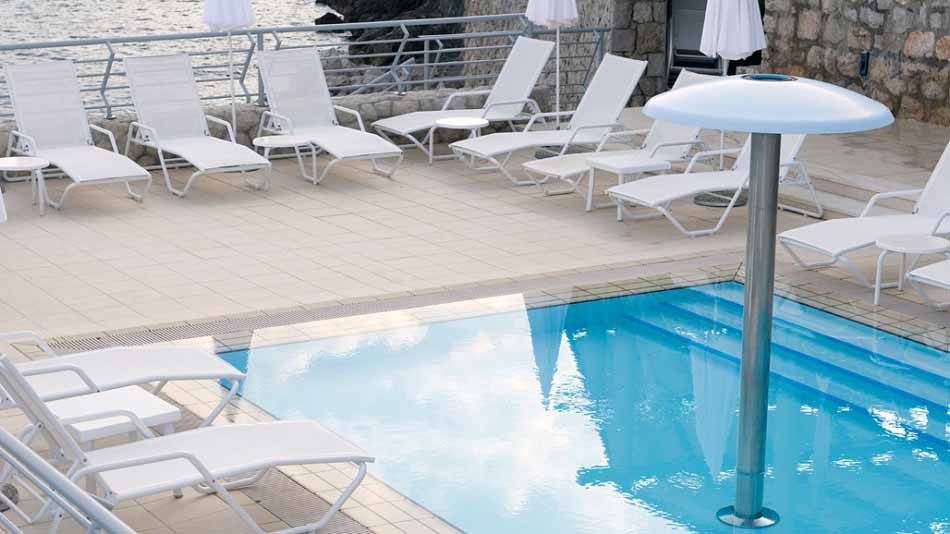
A well-maintained pool deck not only ensures the safety and functionality of your swimming pool area but also enhances the overall appearance of your backyard haven. Pool owners often wonder how often they should resurface their pool deck to keep it in tip-top condition. The answer to this question depends on various factors, such as the type of material used, the climate, and the amount of usage it receives. In this article, we will discuss these factors and provide guidelines on when it’s time to resurface your pool deck.
Materials Matter
The material used for your pool deck plays a significant role in how often it should be resurfaced. Here are some common materials and their recommended resurfacing intervals:
Concrete
A concrete pool deck typically needs to be resurfaced every 3 to 5 years. Sealants and coatings can help prolong their lifespan, but eventually, the surface will begin to wear and require professional attention. Regular maintenance, including cleaning and sealing, will help keep your concrete pool deck in good condition.
Pavers
Paver pool decks have a longer lifespan and usually only require resurfacing every 10 to 15 years. The paver system’s design allows for easy replacement of individual pieces, making repairs more straightforward and less frequent.
Wood
Wooden pool decks require more frequent maintenance and resurfacing, usually every 2 to 3 years. Wood is more susceptible to damage from moisture, sunlight, and foot traffic, so regular staining, sealing, and repairs are essential to keep the wood looking its best.
Climate Considerations
The climate in which your pool is located also plays a role in determining how often your pool deck should be resurfaced. Areas with more extreme weather conditions, such as heavy snowfall or extreme heat, may require more frequent resurfacing to prevent damage and maintain the deck’s integrity.
Usage and Wear
A pool deck that experiences a higher amount of foot traffic or usage will need resurfacing more often than one with less activity. Frequent exposure to water, chemicals, and the weight of loungers and tables can cause wear and tear on the surface of your pool deck. Hiring a qualified professional for pool deck overlay in Atlanta will help identify any areas that require attention or resurfacing. They can assess the current condition of your deck and recommend the best course of action for your specific needs.
Signs It’s Time to Resurface
Keep an eye out for these common indicators that it’s time to resurface your pool deck:
- Cracks, holes, or chips in the surface
- Fading or discoloration
- Uneven or sloping areas
- Pooling water
- Slippery or rough texture
Now that you know when to resurface your pool deck and the factors that affect how often it needs to be done, you’re better equipped to maintain your pool deck in top condition. The cost of resurfacing your pool deck depends on the type of material, the size of the deck, and any additional repairs needed. To get an idea of how much you might expect to pay for resurfacing, you can check out this blog post. It will give you an idea of the cost range by exploring various materials and sizes.
To Sum Up
It’s essential to keep your pool deck in the best condition possible for both safety and aesthetic reasons. Knowing how often you should resurface your pool deck is essential to keeping it looking great and protecting its integrity. It’s also important to consider the climate and how much usage your pool deck receives when determining the ideal resurfacing interval. Finally, watch for signs it’s time to resurface and be aware of the cost involved in this process. With the right maintenance and resurfacing schedule, your pool deck will remain a beautiful and functional part of your backyard for years to come!



